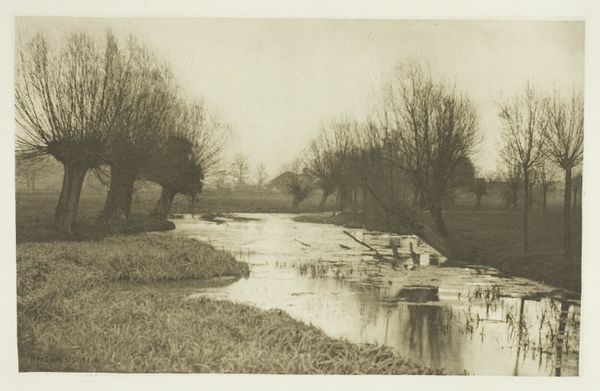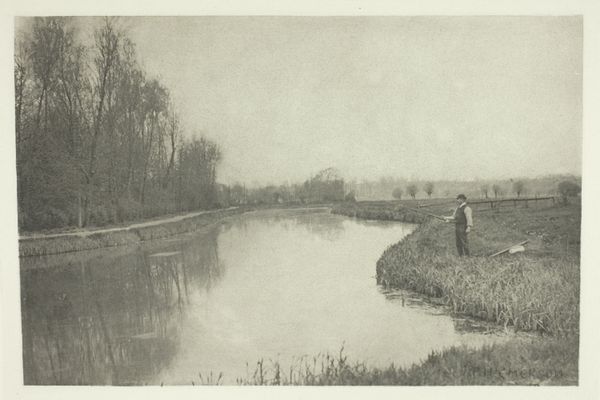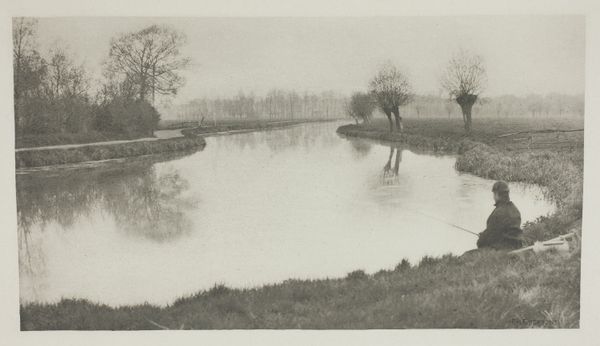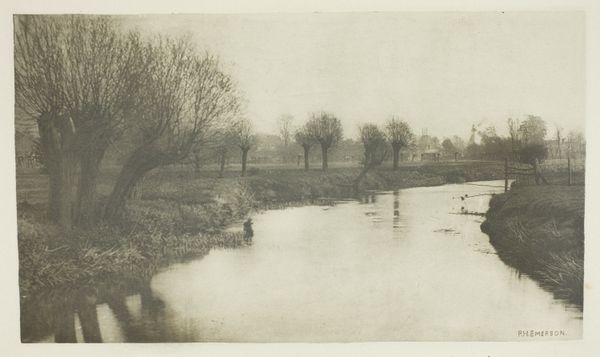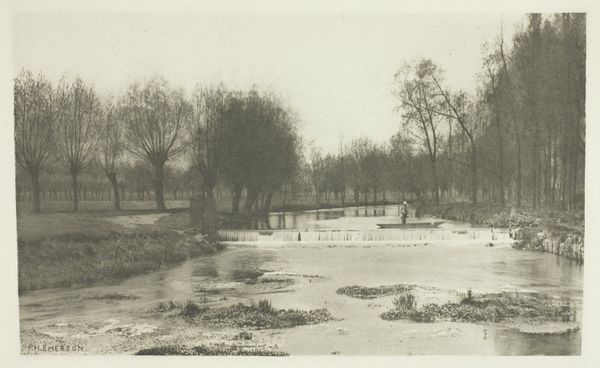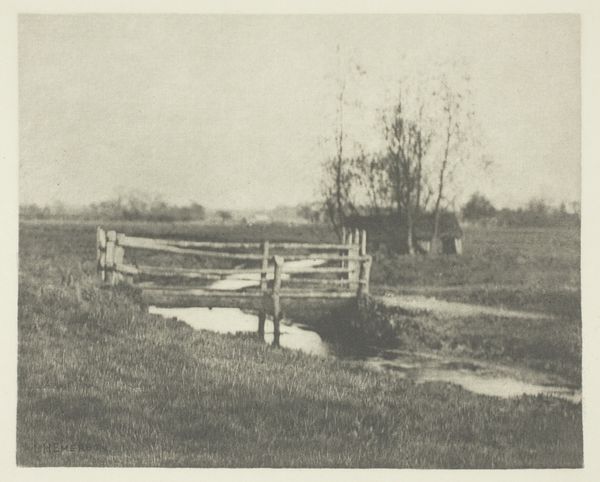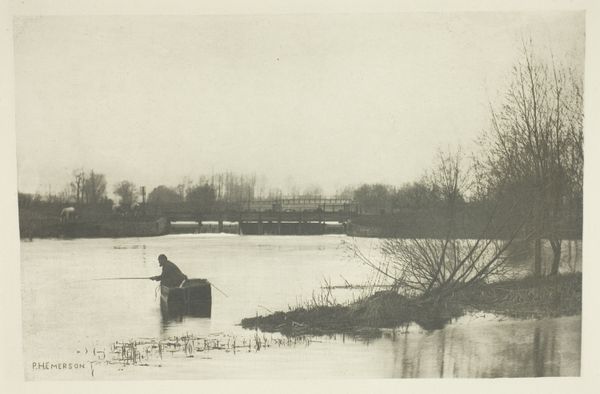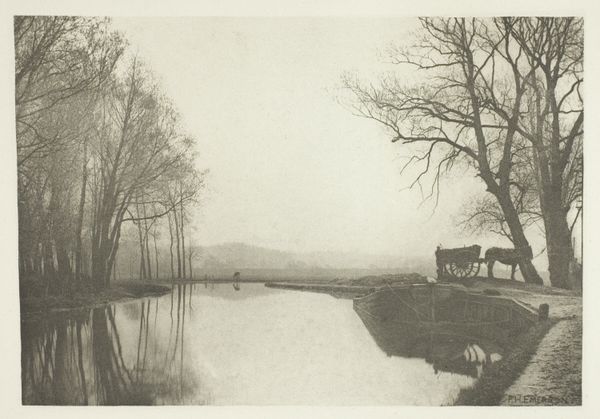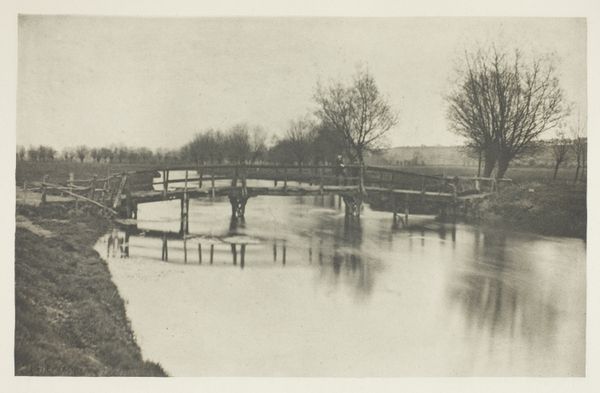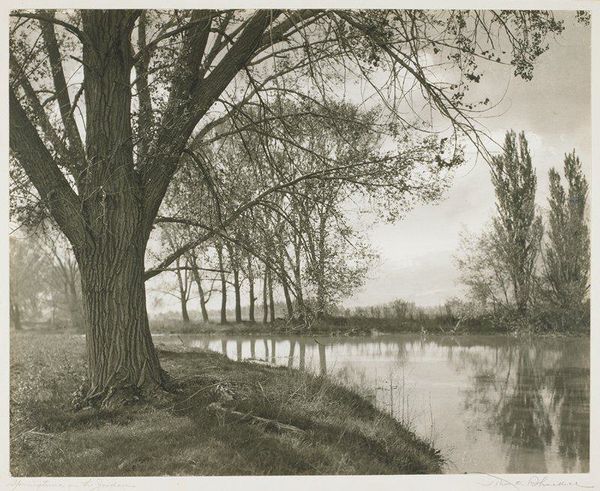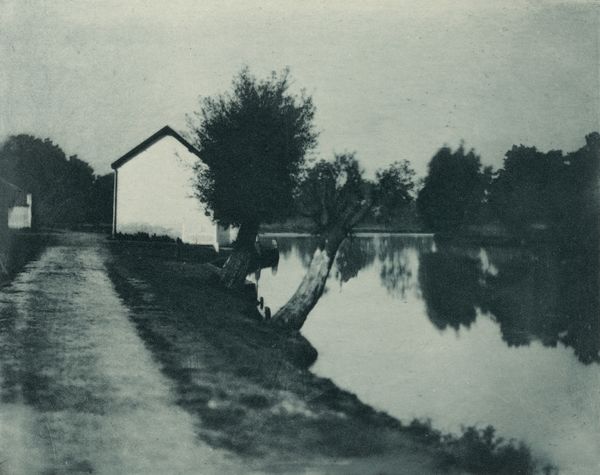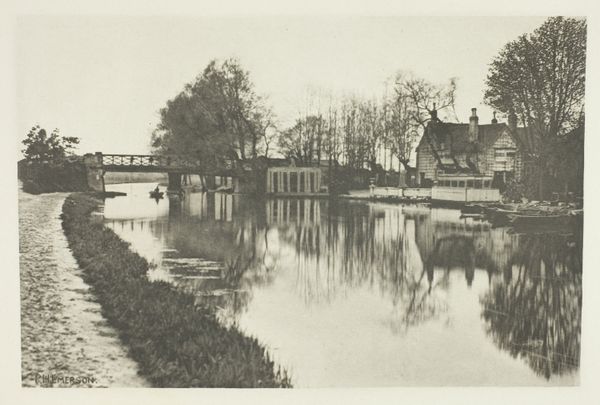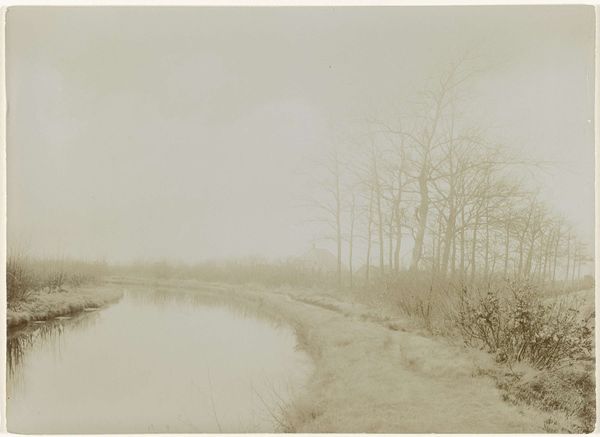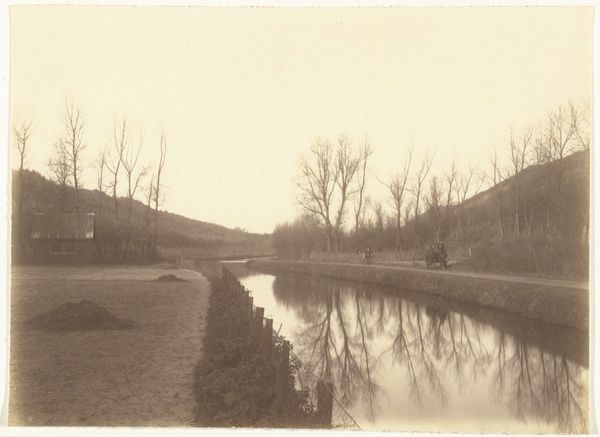
photography
#
pictorialism
#
impressionism
#
landscape
#
photography
Dimensions: 12.8 × 20.5 cm (image); 15 × 22.1 cm (paper); 24.5 × 32.1 cm (album page)
Copyright: Public Domain
Curator: This is Peter Henry Emerson's "The River Stort," taken in 1888. He was a proponent of naturalistic photography and this exemplifies his aesthetic. Editor: It’s very quiet, isn't it? Still. Like a whispered secret. Curator: Emerson strived to capture rural life authentically, reflecting the lives of the working class and agricultural scenes. How do you see that playing out here? Editor: I do, though it's tempered with a soft focus that feels romantic, almost… idealised? There’s a definite artistic license taken with the lighting and composition to frame a specific view of the working class and their relationship to land. There is a curated element to his "naturalistic" style. Curator: Certainly, the influence of Pictorialism is unmistakable, moving photography away from mere documentation and towards fine art. He believed that photographs should be truthful representations of nature, focusing on creating an artistic impression. This photograph really blurs the boundary. Editor: True, Emerson’s intention may have been pure, but it’s worth considering who gets to define "truth" in art. The idyllic portrayal of rural life is always politically charged. What about those whose stories don’t fit this serene image? The landless, the marginalized... Curator: That’s a crucial point. We need to acknowledge that any representation is inevitably shaped by the artist's perspective and the prevailing social context. The photo, even striving for naturalism, isn’t neutral. The composition—the winding river, the careful placement of the trees— speaks to a romanticized ideal of the English countryside, an ideal steeped in privilege. Editor: It is visually soothing, though. But if we are interested in challenging power structures we have to always contextualize, and question the narratives an artwork projects and upholds. We need to explore whose realities are erased in this seemingly gentle image. Curator: Absolutely, Emerson’s technical skill and artistry are apparent, but the photograph offers just one particular perspective. I hope our listeners consider that in the context of our contemporary understanding. Editor: Thanks for offering an important starting point to a deeper conversation, perhaps one that extends past the photograph to what exists just beyond its frame.
Comments
No comments
Be the first to comment and join the conversation on the ultimate creative platform.
